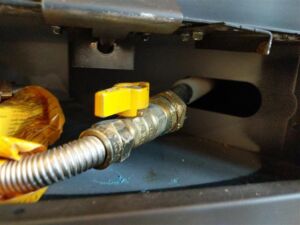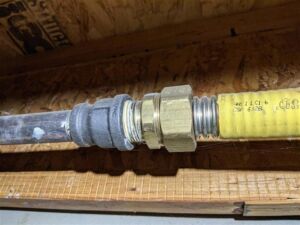
The protective sleeve acts as a protective barrier to the thin metal wall of the pipe. This protective sleeve should be intact throughout the length of the pipe to ensure adequate protection and safety. When installing this tubing, the installation instructions state that the protective sleeve should only be cut back the distance of the utilized connection fitting. This length is typically two valleys, but some fittings require a distance of three valleys. Once the fitting is fully installed, the protective sleeve should terminate at the closest ridge to the connection fitting. It should be noted that various manufacturers and local codes dictate various installation instructions. All installations should be complete following these guidelines.
CSST is rated to pass through walls as long as proper protective measures and fittings have been applied. CSST can pass through walls without any additional protective fittings, so long as the installed protective sleeve is intact. If the CSST is oriented through masonry, metal, or other potential damaging material, a rigid protective sleeve should be utilized throughout the length of this transition. Due to the thin walls of the CSST, all protective measures must be practiced to prevent physical damage to the metal tubing. Damaged CSST in the form of pinholes or cracks in the pipe can lead to gas leaks. This is a significant fire and safety hazard.

Self sealing silicone tape comes in various lengths and widths. It should be applied to all exposed metal sections of the CSST. The tape has large amounts of silicone that acts as the adhesive as well as a means of sealing any potential damage at the metal tubing. It should be noted that this tape is not intended to repair damaged or cracked CSST but is intended to repair the damaged protective sleeve at the CSST. Due to the importance of the condition of gas piping, all evaluations and repairs at the rigid and flexible gas lines should be completed by a qualified and licensed plumbing contractor.
Corrugated stainless steel tubing is a convenient and safe product when installed correctly by following the guidelines dictated in the manufacturer’s installation instructions. Ensuring that this gas piping is properly protected from physical damage can prevent potential gas leaks and help mitigate potential fire and safety hazards.
